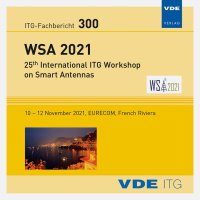Geometric Channel Model and Ergodic Mutual Information for IRS-aided Communication Systems
Conference: WSA 2021 - 25th International ITG Workshop on Smart Antennas
11/10/2021 - 11/12/2021 at French Riviera, France
Proceedings: ITG-Fb. 300: WSA 2021
Pages: 6Language: englishTyp: PDF
Authors:
Alfano, Giuseppa; Nordio, Alessandro (Institute of Electronics, Information Engineering and Telecommunications, National Research Council of Italy (CNR-IEIIT), Torino, Italy)
Abstract:
Intelligent reflecting surfaces (IRSs) have recently been introduced for improving the quality of wireless communication in indoor as well as outdoor scenarios. In this work, we analyze the ergodic mutual information achieved by communicating over an IRS-assisted two-hop channel, where the statistics of each link is governed by the Saleh-Valenzuela [1] model. Our model encompasses the case where an arbitrary number of scatterers is present on each link, and can be applied to signals in the sub-THz or THz bands. We provide a geometric description of the end-toend channel which is represented as the mixed product of random Vandermonde and diagonal matrices. We then assess the impact on the spectral efficiency of many system parameters such as the number of scatterers and their angular distribution, the physical orientation of the transmitting and receiving antennas arrays, and the IRS configuration. We perform the analysis in both the low and high signal-to-noise ratio (SNR) regimes, by analytically deriving tight approximations to the ergodic mutual information, based on the analytic computation of the moments of the channel matrix and on some known results about random Vandermonde matrices. The analysis allows to infer design criteria for the deployment of IRS assisted wireless networks.


